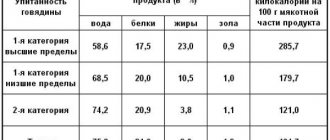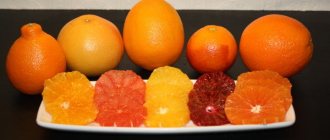Protein as the basis of a balanced diet
Proteins for the body are building blocks that participate in the formation of all cells.
They are what make up the skin, hair, nails, cartilage, capillaries, blood vessels, internal organs and muscles, including the most important one - the heart. In addition, these organic compounds are responsible for transporting oxygen and nutrients to organs and tissues, including the brain, produce some hormones and enzymes, and help fight toxins. So the statement that proteins are needed mainly by athletes and those who dream of a pumped-up body is a big misconception. Protein helps control hunger by helping blood sugar slowly rise and fall. This means that protein products are a necessary component of an excess weight loss program without harm to health.
All proteins consist of amino acids, including essential ones, which a person can only obtain from food. If all of them are present in a protein molecule, the protein is considered complete. You can get this protein from animal products: meat, milk, eggs, cheese and fish. Animal protein is digestible by 80%. Slightly less complete and difficult to digest is the vegetable one, which is present in beans, mushrooms, and nuts. Its absorption by the body is 60-80%.
The daily protein requirement for women is 1.3 g per kg of weight, for men – 1.5 g. When engaging in physical activity, this norm increases by 0.2 g.
Unfortunately, proteins are not stored by the body in reserve, unlike carbohydrates or fats, so a person can only receive them with food. Moreover, no more than 30 g is absorbed at one time. With a lack of these organic compounds, the body takes them from the muscles and cells, which is fraught with serious disorders in the internal organs and systems.
Signs of protein deficiency:
- dry skin;
- brittle hair and nails;
- weight loss;
- growth disturbance in children;
- decreased immunity;
- disruption of the thyroid gland, adrenal glands, and sex glands.
Fats. Correct functioning of the body
A very important (second after proteins) component of food. Of course, its obvious role is to provide us with energy. This includes reserves in the form of strategic deposits on the hips, stomach or other “problem” places, depending on individual characteristics. But “low-fat” diet is guaranteed to lead to serious consequences.
Among other things, a full-fledged “fat basket” guarantees the normal functioning of the hormonal system, and this is a prerequisite for all processes in the body, including muscle building. Therefore, fats must be included in the diet, approximately 1-1.5 grams per 1 kg of body weight.
Photo: istockphoto.com
And again, as with proteins, it would be too easy to limit ourselves to only a quantitative approach. Fats are divided into saturated and unsaturated. That is, mainly from animal sources and from plant sources. We need both. In approximately equal proportions. In practice, there are no problems with saturated foods (again, vegetarians are a different story). Therefore, do not forget to include various vegetable oils (banal sunflower, olive, flaxseed and others), nuts, avocado, olives in your diet on a regular basis. And definitely a couple of times a week, deep-sea varieties of fish. Well, or buy a jar of Omega-3 to be on the safe side.
Expert opinion: is it possible to lose weight with coconut oil?
The meaning and role of fats
Fats are water-insoluble compounds consisting of glycerol and fatty acids. Regulating fat metabolism in the body is one of the main components of proper nutrition.
Main functions of fats:
- formation of energy resource in the body;
- ensuring healthy hair and skin;
- assistance in the absorption of vitamins A, D, E and K;
- supporting the body's immune system.
Fats differ in their value, depending on their composition. Unsaturated ones are considered beneficial to health, of which omega-3 and omega-6 are of particular value. The former can be obtained from fish, nuts, seeds, leafy vegetables and soybeans. The second are made from vegetable oils, for example, olive, sunflower, flaxseed. Such acids are not synthesized by the body on its own, which means that consumption of products containing them is an indispensable component of nutrition. The ratio of omega 3 and omega 6 acids is also of great importance, which should be 1:4.
Unfortunately, the required amount of omega-3 acid is difficult to obtain with food, because not everyone can eat the required 1.5 kg of sea fish per week, so this acid must be present at least in the form of vitamins.
Harmful to the body are saturated solid fats, which are found in meat, sausages, bakery and confectionery products, fast food, carbonated drinks and sauces. The danger is that their quantity is difficult to control, they are not beneficial, lead to excess weight and increase cholesterol levels. Therefore, the consumption of such fats should not exceed 20 g per day.
The role of fats in beauty
Fats (lipids) are the most concentrated sources of energy. The oxidation of fat releases 9 kcal of energy - almost 2.5 times more than the oxidation of proteins and carbohydrates (4 kcal). Excess energy consumed from food is stored in the form of fat, which is deposited in the subcutaneous tissue or around internal organs, so we need to figure out how much and what kind of fat we need in order to get the required amount of energy, to be beautiful without getting fat.
The contribution of fats to human beauty is due to the following factors:
- fats protect the body from hypothermia, organs and tissues from damage (injury);
- fats have a plastic function, being a necessary component of cell membranes (cell membranes). Accordingly, fats (lipids) and their metabolism in the body (digestion, breakdown, absorption, use as energy and plastic material) are directly the building material of the stratum corneum of the skin, hair and nails and their “lubricant”, which gives dullness to the skin and shine to the hair and nails
Therefore, to optimize fat metabolism, it is necessary to meet the requirements for the level and quality of fat in the diet.
Fat should make up no more than 30% of the diet and at least 20-25% of calories, 60-70% of all fats should be of animal origin (solid fats - butter, lard, lamb and beef fat, fish fat), and 30- 40% are of plant origin (oils named after the origin of the oilseed crop).
Each dietary fat has a specific composition called fatty acid.
Saturated fatty acids predominate in animal fats
(except for fish fats).
Vegetable oils contain unsaturated fatty acids
, which are divided into monounsaturated and polyunsaturated. The body's need for fat is 60-80 g per day. About half of this amount contains prepared foods: meat, cheese, cottage cheese, milk, etc. Additionally, for cooking, dressing salads and porridges, and sandwiches, no more than 30-40 g of fat per day is recommended. Diets should include about 15-17 g of vegetable oil in the widest range. A necessary component of the diet should also be fatty fish, such as herring, mackerel, sardines, salmon, etc. (ideally, eat such fish at least 2 times a week).
Fish oils and fats
satisfy our body's needs for polyunsaturated fatty acids (omega-6 and omega-3 PUFAs).
omega-6
PUFA (linoleic, arachidonic PUFA) are sunflower, olive and corn oils.
Omega-3
PUFA (alpha-linoleic, eicosapentaenoic, dogosapentaenoic, dogosahexaenoic PUFA) are found in the fat of marine and northern fish (herring, mackerel, sardines, salmon, cod liver, krill oil), as well as in flaxseed, rapeseed, and soybean oils.
Ratio of omega-6 to omega-3
PUFA should be no more than 10:1, preferably 5:1. The latter has the most beneficial effect on the condition of the skin. PUFAs are necessary for the synthesis of prostaglandins - tissue “hormones” that are extremely important for normalizing the condition of the skin. Omega-3 PUFAs are a powerful anti-allergic factor that inhibits the development of inflammatory processes, including diseases of the skin and subcutaneous tissue: allergic rashes, dermatitis, eczema, psoriasis. With a lack of content in food and a violation of the ratio of polyunsaturated fatty acids of the omega-3 and omega-6 series to each other, skin diseases develop faster.
Let us note that recently doctors have associated such an unpleasant thing as depression with a deficiency of omega-3 essential fatty acids. And a depressed person, alas, has no time for beauty at all.
Phospholipids
Phospholipids are complex lipids (fractions of dietary fats), the most famous of which are lecithin, sphingomyelin, and cerebroside. They also contain essential PUFAs. Phospholipids (especially lecithin) stabilize the activity of the nervous system and liver, increase the body's resistance to toxic substances, and reduce moisture loss from the skin.
The largest amount of them is present in the liver, in the yolk of chicken eggs, and in oilseeds.
Do not forget to use butter in your diet - about 20 g, sour cream in a dish in an amount of no more than 10-15 g per day.
The need for carbohydrates in a balanced diet
Carbohydrates are commonly called nutrients that are based on sugars, such as fructose, sucrose and glucose. The main role of such organic compounds is to supply the human body with the energy necessary for its life. According to the recommendations of experts, 40% of it should be produced from carbohydrates. In addition, these nutrients are involved in supplying the entire body with glucose, which is necessary for the normal functioning of the brain, central nervous system, and kidneys.
Insufficient intake of carbohydrates in the body leads to a constant feeling of fatigue, so such organic compounds are necessary for good health. But it is important to always remember that carbohydrates tend to accumulate in the body, so their excessive consumption can be dangerous: it threatens to turn into fat, increase the level of cholesterol in the blood, develop atherosclerosis, obesity and diabetes.
Simple and complex carbohydrates
Based on their chemical structure, carbohydrates are divided into simple and complex. The first include glucose, sucrose, fructose and others, which, when ingested, quickly break down and increase blood sugar levels, thereby instantly satisfying hunger, but only for a short time. Simple carbohydrates are found in soda, juices, fruits, baked goods and confectionery products, potatoes, and white rice. Their excess is easily stored in the body as fat.
The rate of breakdown of carbohydrates contained in a particular product can be determined using the glycemic index. The higher it is, the faster your blood sugar level will rise after consuming the product.
Complex carbohydrates are considered much more beneficial. They usually contain a large amount of fiber necessary for the body, due to which they are digested much more slowly. In the body, they break down into simple carbohydrates, take longer to digest, maintain optimal blood sugar levels and do not cause hunger. You can get them by eating whole grain cereals, vegetables and legumes, wholemeal bread, which also contain many other useful substances.
The ratio of complex and simple carbohydrates in the body should be 75% to 25%. At the same time, it is advisable to obtain simple ones from fruits rich in vitamins.
A balanced ratio of proteins, fats and carbohydrates in the diet
The value of proteins, fats and carbohydrates for the body lies not only in their quantity, but also in the correct proportion. According to doctors and nutritionists, the amount of proteins and fats in the daily menu should be approximately the same - 30% of both. But it is recommended to consume slightly more carbohydrates, which supply the body with energy – 40%. This ratio should provide the body with the norm of these nutrients and prevent excessive weight gain.
However, not all so simple. The ratio of proteins, fats and carbohydrates depends on many factors: age, gender, pregnancy, health problems, metabolic rate, weight and the amount of energy expended daily. Obviously, people with excess fat should slightly limit fat-rich foods, keeping only essential polyunsaturated fats in their diet. And if you are underweight, you should consume much more protein.
Only a specialist can determine the optimal ratio of proteins, fats and carbohydrates for each individual person.
Nutrition based on the right combination of proteins, fats and carbohydrates (BJU)
10 May
2019
Today we will talk about food: what is proper nutritional food and how to eat for those who want to have a healthy and aesthetically attractive body. After all, in shaping a sports figure, a huge part of the result depends not on training in the gym, but on the kitchen.
What is BZHU
The abbreviation BZHU is the concept of the correct ratio of proteins, fats and carbohydrates in our food, as well as the relationship of this ratio with the total calorie content. The BJU ratio is of great importance both in standard training and in the matter of optimizing body weight. We would like to immediately draw your attention to the fact that BJU has nothing to do with most diets, which can only be considered as a weapon against health, but not as a tool for losing or gaining weight. In most cases, people do not think that, following the advice of various diets, it is not enough to create a calorie deficit in our diet; we also need to provide the body with a sufficient amount of necessary micro- and macroelements. In practice, the result of popular diets is problems with joints, destruction of the human hormonal system, disturbances in the functioning of the cardiovascular system, weight loss due to a reduction in muscle mass and stress for the whole body. It is not surprising that after the end of this torment, the body will immediately begin to regain weight, and even with a reserve in case of another crisis.
But, let's return to BZHU.
Average formula for the ratio of proteins, fats, carbohydrates:
- Proteins - 15-20%
- Fats - 30%
- Carbohydrates - 55-60%
These figures are approximate. In fact, we all have individual indicators and body needs, not to mention the tasks assigned to nutrition. The total energy intensity of daily nutrition is also of great importance.
Correct BJU against the backdrop of fitness training
As soon as the conversation concerns fitness training or the task of losing weight, the BZHU formula begins to change. Let's consider the most common situations:
- Proper nutrition to maintain current weight;
- Nutrition with the calculation of BZHU for weight loss;
- Nutrition against the backdrop of an active lifestyle and training.
Having an initial goal, you can calculate the approximate daily calorie intake. The most common method for calculating caloric intake is based on calories per kilogram of weight:
- Option for ordinary, healthy people with a sedentary lifestyle and lack of exercise: 26 - 30 kcal per day per kilogram of weight.
- An option for those who have moderately intense physical activity during the day with a regularity of 3 to 5 times a week: 31 - 37 kk per day per kilogram of weight.
- An option for those who have hard, active work or a lot of movement during the day: 38 - 40 kk per day.
Those who practice heavy, regular training, as well as professional athletes, can count on 40 kk per day or more.
Conclusion
The method for determining the calorie content of the diet, which we described above, is not ideal. In practice, you usually have to adjust your diet. So, depending on your current weight and diet goals, calorie content either increases or decreases. If the goal is to gain weight, add 10-20% of calories to the initial diet. If the goal is to lose weight, 10-20% is taken away. Then, over the course of a week, we will monitor fluctuations in body weight and, if necessary, make another change in nutrition.
Igor Kabakin, fitness trainer and health-improving gymnastics instructor at Medical & Spa Resort “Alfa Radon”.
Proportions of proteins, fats and carbohydrates when losing weight
To get rid of excess weight, it is important to create the right diet, which will not only help you lose weight, but will also not harm your health. In this case, consuming proteins alone will not solve the problem, since in the absence of the necessary fats and carbohydrates there will be no energy left for sports and an active lifestyle. There is no doubt that when fighting extra pounds, you should focus on protein foods, which, with low calorie content, satisfy the feeling of hunger for a long time.
As for fats and carbohydrates, there should be less of them, but they must be present in the diet. A complete rejection of saturated fats and fast carbohydrates, that is, from all sausages, baked goods, confectionery and other industrial sweets, fast food, carbonated drinks, and potatoes, will help solve the problem of excess weight. At the same time, it is very important to continue consuming unsaturated fats and complex carbohydrates, which will provide the body with the necessary energy without gaining weight. So when losing weight, the following are required: fish, vegetables, avocados, natural vegetable oils, whole grains and even some nuts. The whole secret of losing weight when consuming them lies in the quantity, quality and time of consumption.
The optimal ratio of proteins, fats and carbohydrates when losing weight is 40%, 30%, 30%.
Proper distribution of proteins, fats and carbohydrates throughout the day
For healthy well-being, control over hunger and weight, it is important to drink a lot of water and properly distribute the intake of protein, carbohydrate and fatty foods every day. It must be included for breakfast, lunch and dinner. The whole secret is in the right ratio. The morning meal is especially important, since its purpose is to saturate a person with the energy necessary for the whole day, which is provided by carbohydrates. However, breakfast should also satisfy the feeling of hunger, so you can’t do without protein foods. That is why the optimal energy dish would be muesli made from whole grain cereals, cottage cheese with fruits, berries or nuts.
Breakfast should account for about 25% of the daily calorie intake, lunch - 35%, and dinner - 20%. For snacks - the remaining 20%
At lunch, the amount of protein, fat and carbohydrates should be approximately the same. But all these nutrients must be useful. Chicken breast, some brown rice or buckwheat and a vegetable salad will provide the right ratio. In this case, the first two products should fit on one half of the plate, and vegetables on the other, in order to maintain calorie content.
Dinner involves reducing carbohydrate foods and, on the contrary, increasing the proportion of protein. And to provide the body with fats during this meal, you can eat sea fatty fish with avocado salad and herbs. Snacks will help make up for the lack of substances, during which it is better to eat fruits containing vitamins and minerals, cottage cheese or protein bars.
It is very important not to skip full meals and not to go on a hunger strike, as this is fraught with a lack of nutrients and, as a result, health problems. A strong feeling of hunger also contributes to overeating.









